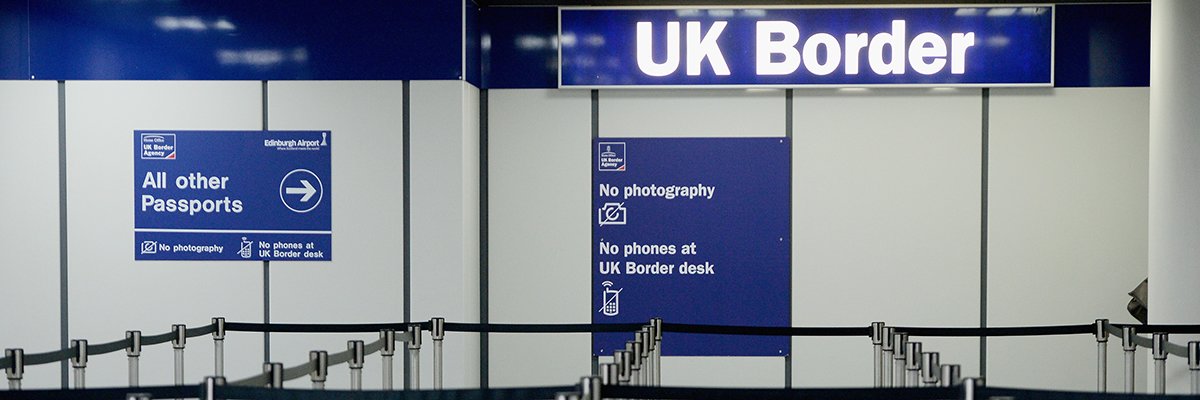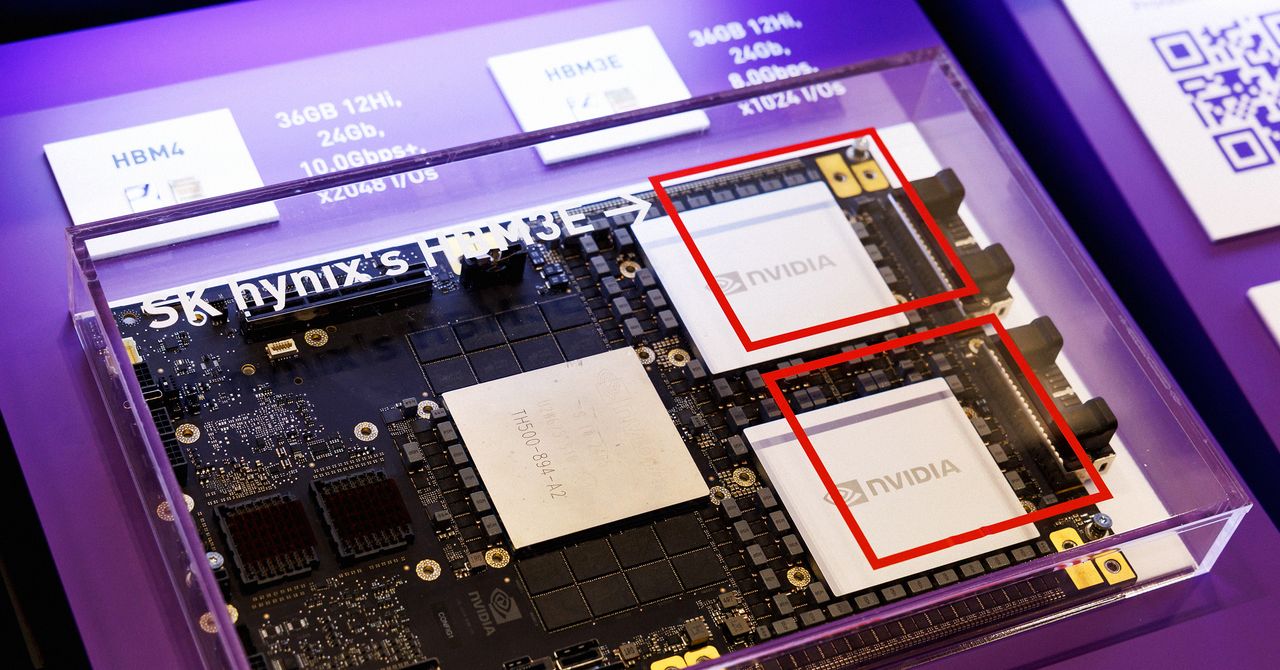Tech
Police ordered to give reasons in closed court for seizing phone of UK Hamas lawyer | Computer Weekly

North Wales Police has been ordered to disclose the reasons for stopping a UK lawyer who represented Hamas and seizing the contents of mobile phone to closed-door court hearing.
Justice Martin Chamberlain said that he did not accept that North Wales Police could simply assert there was a lawful basis for stopping and copying the contents of solicitor Fahad Ansari’s phone, without saying what the reason was.
But the judge refused to issue an order preventing a police-appointed independent legal counsel from rstarting a review of the contents of Fahad Ansari’s phone until Ansari could appeal to a judicial review.
The decision came after North Wales police gave an undertaking that the material would not be shared with police investigators until a decision in a further court hearing.
Solicitor Fahad Ansari, who represented Hamas in a legal challenge to overturn its status in the UK as a proscribed terrorist organisation, is seeking a judicial review after being stopped by police and his mobile phone seized.
Ansari, an Irish citizen, argues that he was unlawfully stopped, detained and questioned under Schedule 7 of the Terrorism Act after he drove off a ferry with his family at Holyhead after visiting relatives in Ireland in August.
The case is understood to be the first time police have used Schedule 7 of the Terrorism Act – which allows police to stop people without grounds for suspicion – to seize and copy the contents of a phone belonging to a solicitor in the UK.
Ansari said that his phone contained material used for work, and that accessing it would breach the legal privilege of clients dating back 15 years.
Jude Bunting KC, told a court hearing today that North Wales Police, which leads counter-terrorism policing in Wales, had failed to provide any reason for stopping Ansari and seizing his mobile phone.
He told the court that Ansari’s phone contains communications with past and current clients, witnesses and legal counsel, stored on multiple applications and cloud-based services that were protected by legal privilege.
The phone contains details of at least 3,000 contacts, voice notes, memos, case papers, search terms, and meta data, the overwhelming proportion of which is likely to be legally protected.
Bunting said that Ansari had been targeted by police to obtain and access the contents of his mobile phone. A Schedule 7 stop cannot be justified on the grounds that Ansari’s clients were of interest to the police and the security service, he said.
The barrister said that it was not reasonably practicable for an independent counsel to ‘sift’ the legally privileged material on the phone, which made up 95% to 98% of the content, from non-privileged material that police were allowed to access.
North Wales Police has refused to explain how material can be sifted, apart from simply asserting “there are adequate safeguards in place,” he said.
He said it was not practicable to identify key words to carry out searches that would identify legally privileged material.
The police had given no explanation why it was necessary to search Ansari’s mobile phone, let alone why it was necessary to search it now, Bunting told the court.
“There is a real risk that legally privileged material will be provided to the examining team. If this happens, the damage to the claimant will be irreparable,” Bunting wrote in legal submissions.
Georgina Wolfe, representing North Wales Police, said that there was no evidence to support the assertion that Ansari had been stopped and his mobile phone seized can copied, because of the clients he represented.
She argued that there was an effective long-established procedure to sift legally privileged material from seized devices, under the Schedule 7 code of practice.
The court heard that the chief constable of North Wales Police had appointed an independent KC to review material on Ansari’s phone. “The chief constable has no intention of reviewing or sharing any legally privileged material,” said Wolfe.
In written submissions, Wolfe said that if any material was found that appeared to suggest Ansari was a terrorist, or requires further action by law enforcement, that material may be lawfully shared with other law enforcement agencies.
Wolfe told the court that North Wales police accepted that Ansari acting as legal representative of Hamas would not be a proper basis for stopping him under Schedule 7.
She told the court that there was a proper reason for stopping him but she was not in a position to share it in open court.
The judge, Justice Martin Chamberlain, said that he did not accept that the chief constable of North Wales Police “could simply assert there was a proper basis of that search without saying what the reason was”.
He rejected arguments from Bunting to allow an interim injunction to prevent the contents of the phone being examined until a judicial review could consider the lawfulness of the police decision to stop Ansari under Schedule 7.
“There was a strong public interest in allowing the chief constable to pursue an investigation into whether or not the claimant was involved in terrorism,” he said.
Wolfe had offered an undertaking that the independent counsel would not inform the chief constable, “or anybody else” of the contents of the phone.
The judge said he accepted that this would involve some loss of confidentiality for Ansari, but said there was no material risk of material from his phone being communicated to the police.
The court will make a ruling to hear an explanation from North Wales Police for the reasons for stopping Ansari in a closed hearing before a special advocate, later this month.
The judge suggested that the special advocate could make an argument for a ‘gist’ of the reasons for the stop to be made public if that was appropriate.
Speaking before the hearing, Ansari said: “Even the police agree that my phone contains sensitive, privileged information. All I am asking the court on Monday is to make sure this material stays protected until a judge rules on whether the police acted lawfully in detaining me and seizing it.”
The campaigning group, Cage, said Schedule 7 was an “exploitative power”. Head of public advocacy Anas Mustapha, said:“Courts have repeatedly failed to claw back citizens’ rights undermined by Schedule 7. In this case, with the stakes so high, the judges ought to do more to defend civil liberties and the right to practice law without state harassment.”
Tech
Hands On With Google’s Nano Banana Pro Image Generator

Corporate AI slop feels inescapable in 2025. From website banner ads to outdoor billboards, images generated by businesses using AI tools surround me. Hell, even the bar down the street posts happy hour flyers with that distinctly hazy, amber glow of some AI graphics.
On Thursday, Google launched Nano Banana Pro, the company’s latest image-generating model. Many of the updates in this release are targeted at corporate adoption, from putting Nano Banana Pro in Google Slides for business presentations to integrating the new model with Google Ads for advertisers globally.
This “Pro” release is an iteration on its Nano Banana model that dropped earlier this year. Nano Banana became a viral sensation after users started posting personalized action figures and other meme-able creations on social media.
Nano Banana Pro builds out the AI tool with a bevy of new abilities, like generating images in 4K resolution. It’s free to try out inside Google’s Gemini app, with paid Google One subscribers getting access to additional generations.
One specific improvement is going to be catnip for corporations in this release: text rendering. From my initial tests generating outputs with text, Nano Banana Pro improves on the wonky lettering and strange misspellings common in many image models, including Google’s past releases.
Google wants the images generated by this new model—text and all—to be more polished and production-ready for business use cases. “Even if you have one letter off it’s very obvious,” says Nicole Brichtova, a product lead for image and video at Google DeepMind. “It’s kind of like having hands with six fingers; it’s the first thing you see.” She says part of the reason Nano Banana Pro is able to generate text more cleanly is the switch to a more powerful underlying model, Gemini 3 Pro.
Tech
Four Indicted In Alleged Conspiracy to Smuggle Supercomputers and Nvidia Chips to China

Stern said text messages obtained by authorities show Li boasting about how his father “had engaged in similar business on behalf of the Chinese Communist Party.” Stern alleged the messages also show Li, who works at a hardware distribution company, was aware through news articles he shared that the Nvidia chips were subject to export controls. “He explained that his father had ways to import them,” Stern said, again citing Li’s text messages.
Stern told the court that Li “did admit to various facts” during questioning by federal agents on Wednesday that implicated him.
The defendants face various charges related to violating export control laws and up to 20 years in prison.
Ho and Raymond did not immediately respond to requests for comment sent to LinkedIn accounts purportedly belonging to them. Public defenders for Chen and Li declined to comment.
Nvidia spokesperson John Rizzo said in a statement that “even small sales of older generation products on the secondary market are subject to strict scrutiny and review” and that “trying to cobble together datacenters from smuggled products is a nonstarter, both technically and economically.”
Corvex, an AI cloud computing business Raymond consulted for, said in a statement that it had rescinded a job offer for him to join the company full-time and that it had no connection to the alleged wrongdoing.
Earlier this year, the US Department of Commerce was reportedly considering restricting the sale of advanced chips to Malaysia and Thailand in an effort to curb chip smuggling, but the regulations have yet to be finalized. The Commerce Department did not immediately respond to a request for comment.
Magistrate Judge Westmore ordered Li to hire an attorney because she said he had significant equity in a San Leandro, California, home and other assets, making him ineligible for a public defender. The magistrate also set a hearing for Tuesday to decide whether Li is a significant flight risk and should continue to be detained. He holds a US green card and Hong Kong citizenship.
Li, wearing glasses, flipflops, and a black windbreaker, nodded in response to some of Westmore’s statements but did not speak. Kaitlyn Fryzek, his temporary public defender, said Li is planning to marry a US citizen. “His incentive is to stay and get married to his fiancée,” Fryzek said.
Tech
Got a Pixel 10? Google’s Android Phone Can Now Share Files With Apple’s AirDrop
The caveat is that the iPhone user will need to switch AirDrop into the “Everyone for 10 Minutes” mode instead of “Contacts Only” mode. Google says this isn’t some kind of workaround solution. It’s a direct, peer-to-peer connection; your data isn’t routed through a server, shared content isn’t logged, and no extra data is shared. Naturally, iPhone owners will be able to send data back to Pixel 10 phones as well.
Google has not worked with Apple on this cross-compatibility, as the company says it “welcomes the opportunity” to work with Apple so that this sharing function can work in the Contacts Only mode. “We accomplished this through our own implementation,” a Google spokesperson tells WIRED. “Our goal is to provide an easy and secure file-sharing experience for our users, regardless of who they are communicating with.”
In a security blog post, Google says the underlying strategy for what makes this new synergy between Quick Share and AirDrop work is the memory-safe Rust programming language. “These overlapping protections on both platforms work in concert with the secure connection to provide comprehensive safety for your data when you share or receive,” writes Dave Kleidermacher, vice president of Google’s platforms security and privacy.
Google tapped NetSPI, a third-party and independent penetration testing firm, to validate the security of the new sharing feature. The findings? The interoperability is “notably stronger” than other industry implementations. That’s pretty important, considering what happened the last time someone tried to improve cross-compatibility between iOS and Android without Apple: The startup Beeper tried to make texts from Android phones show up as blue bubbles on iPhones and caused all kinds of drama.
The number of people who can actually use this feature is limited because it’s only available on Google’s latest Pixel 10 smartphones, which just launched this past August. However, Google says it’s looking to expand the feature to more Android devices in the future.
This new feature in Quick Share is rolling out starting today to the Pixel 10 series, which includes the Google Pixel 10, Pixel 10 Pro, Pixel 10 Pro XL, and Pixel 10 Pro Fold. As it’s rolling out, you may not see it immediately on your device. To use it, all you need to do is select something to share, whether it’s a file, contact, or photo, choose Quick Share in the sharing menu, and make sure the iPhone owner has their AirDrop set to “Everyone for 10 Minutes Only.” The iPhone will be able to see the Pixel 10 device and can receive or send data.
-

 Tech6 days ago
Tech6 days agoNew carbon capture method uses water and pressure to remove CO₂ from emissions at half current costs
-

 Politics1 week ago
Politics1 week agoBritish-Pakistani honoured for transforming UK halal meat industry
-

 Business6 days ago
Business6 days agoThese 9 Common Money Mistakes Are Eating Your Income
-

 Sports5 days ago
Sports5 days agoTexas A&M officer scolds South Carolina wide receiver after touchdown; department speaks out
-

 Business6 days ago
Business6 days agoWhat’s behind Rachel Reeves’s hokey cokey on income tax rises?
-

 Sports7 days ago
Sports7 days agoApple scrapping MLS Season Pass service in ’26
-

 Fashion7 days ago
Fashion7 days agoAfter London, Leeds and Newcastle, next stop Glasgow for busy Omnes
-

 Tech1 week ago
Tech1 week ago$25 Off Exclusive Blue Apron Coupon for November 2025






